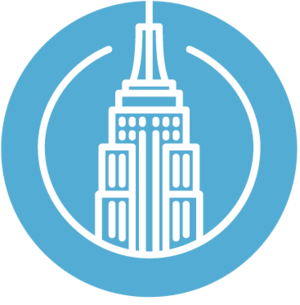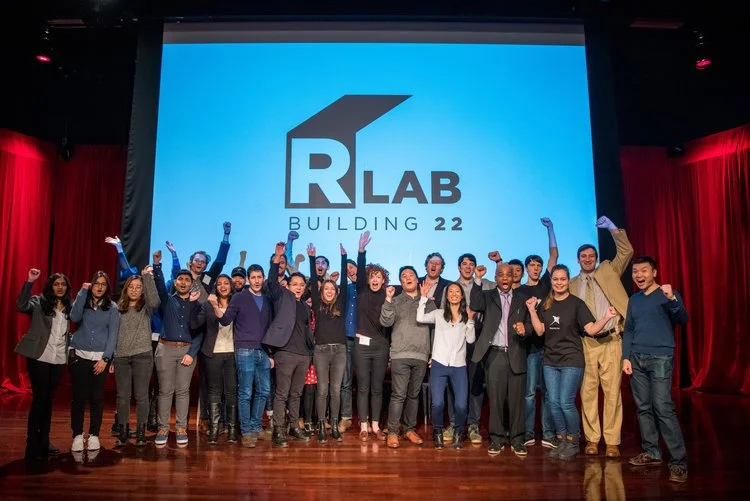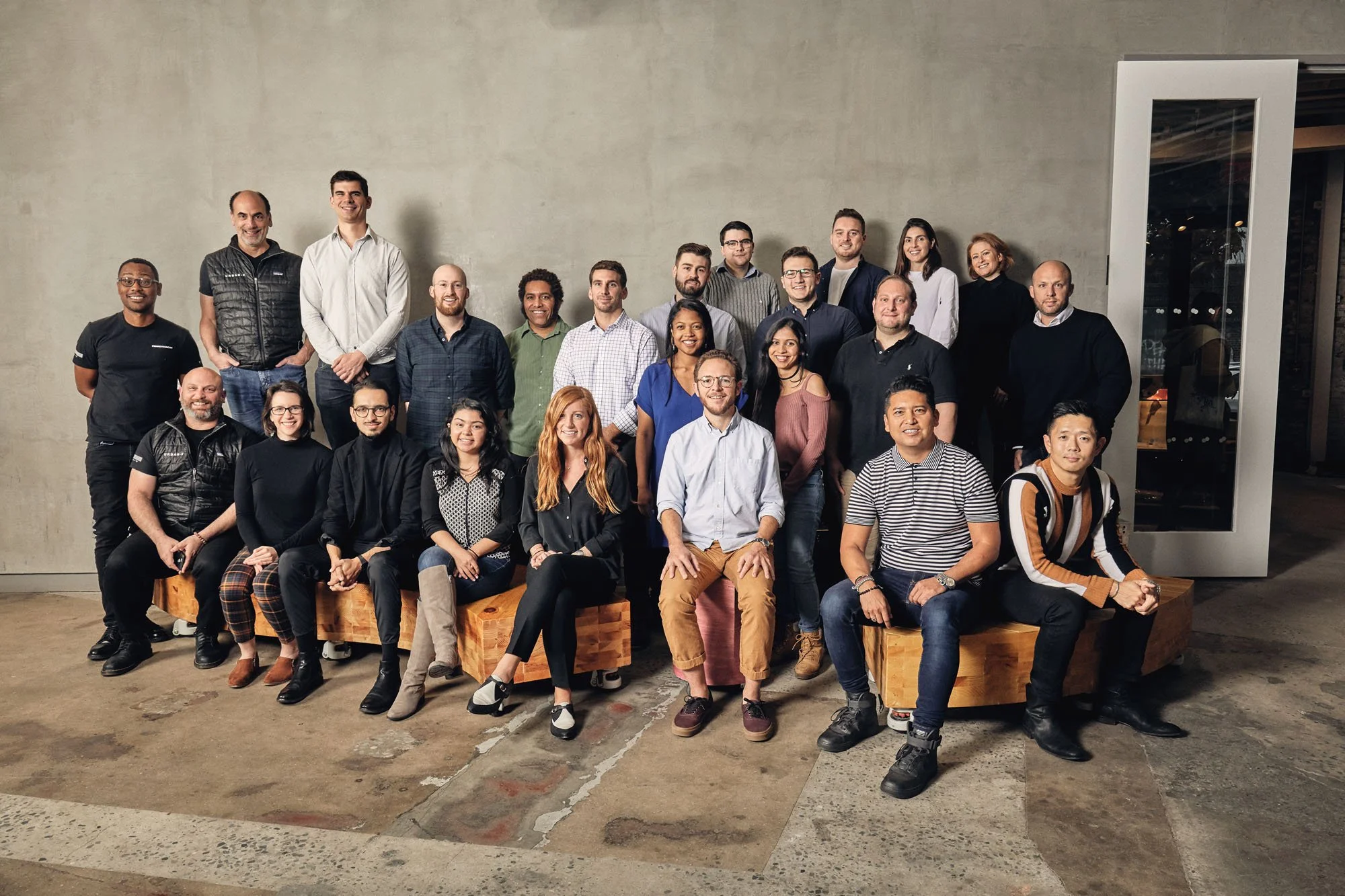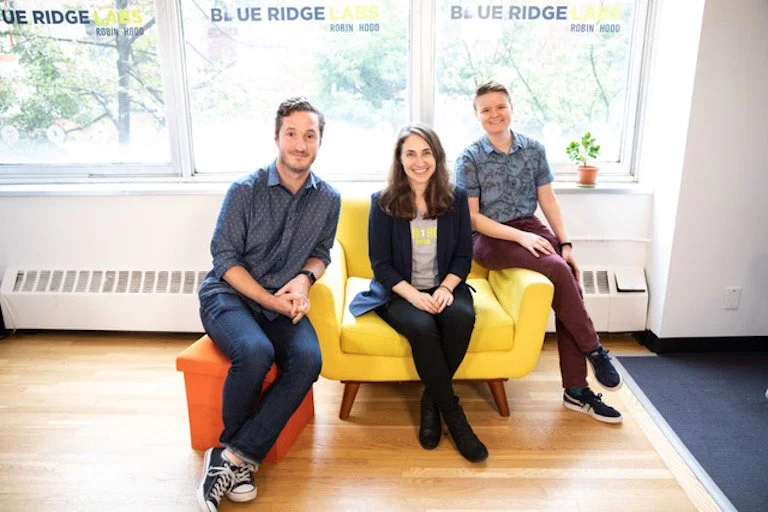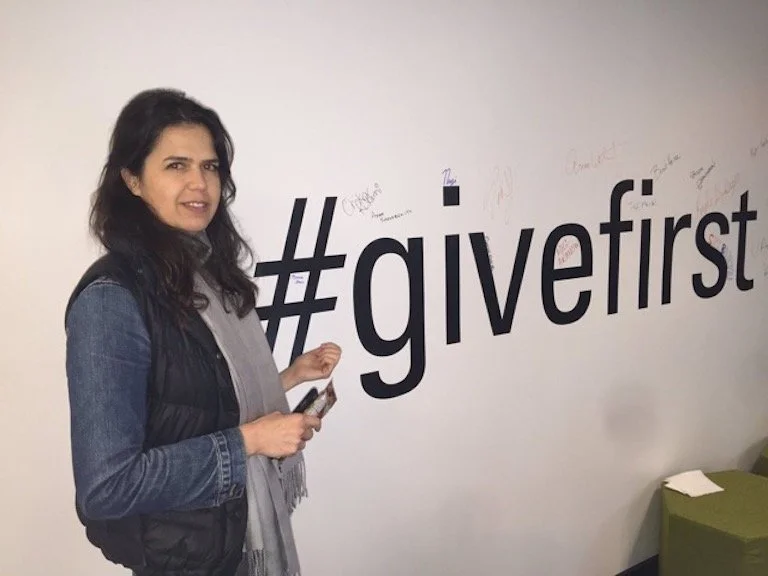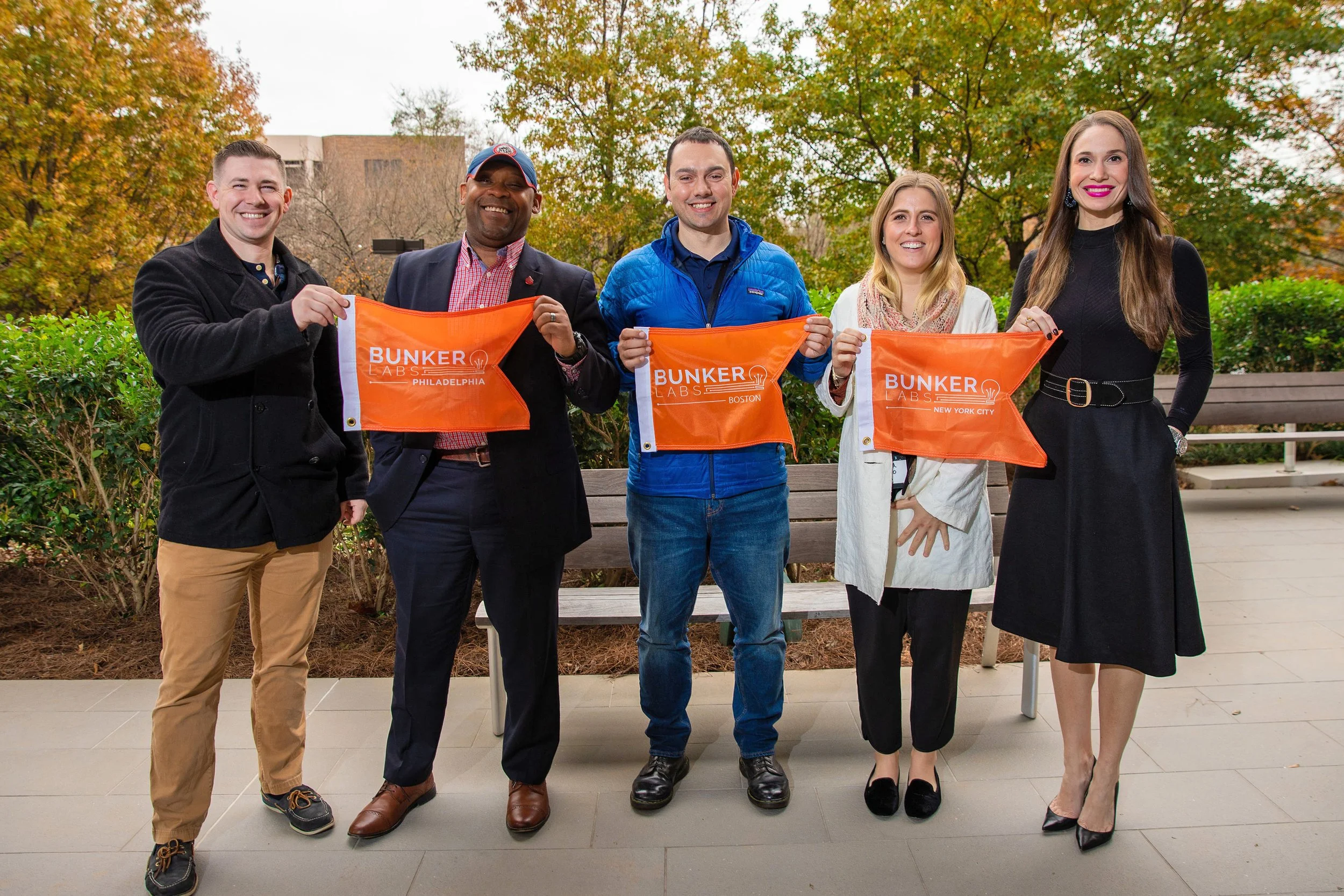NYC Accelerators and Incubators to Watch (December 2018)
As we come to the end of 2018, there’s a lot of milestone moments to be grateful for in the last year of New York tech, but one rises to the top of the list: the explosive growth of the startup community. NYC is now home to more than 9,000 startups receiving nearly $12B in total investment.
But big numbers like those would be next to impossible without all of the accelerator and incubator programs that exist here to get them off the ground. With 100+ programs across the city, entrepreneurs have opportunity at every turn to gain access to the feedback, mentorship, funding, and space they need to pilot and scale their businesses.
To celebrate everything these programs are doing to support and build the startup ecosystem, we’re profiling five accelerators committed to advancing new ideas with urbantech, social ventures, veteran entrepreneurs, media innovators, and more.
NYC MEDIA LAB
How does your accelerator work?
NYC Media Lab Executive Director Justin Hendrix: We are running multiple entrepreneurship programs at the moment. At NYC Media Lab, we run The Combine, which takes teams from across New York City’s universities and helps them to commercialize concepts and technologies. At RLab, we just finished an XR startup bootcamp helping to do the same, specifically focused on virtual and augmented reality. And we are about to launch an accelerator program for more established, yet still early stage startups in collaboration with Super Ventures. These programs all run roughly three months, and emphasize customer discovery and market validation.
When do applications for your next class/cohort open?
JH: We just closed applications for our spring accelerators. We will have a new application round open in May.
What do you have to demonstrate to be accepted into your accelerator program?
JH: First, we look at the team. Whether the team has the capabilities — technological and otherwise — to do what they say they want to do. Then, we look at the fit with the program. Can we help this team? Can the mentor network we have developed make a difference for this team? Finally, we look at the idea. The idea in some ways is the least important, because it is likely to change the most!
What are you predictions for the digital media landscape in 2019?
JH: The buzzword in 2019 will not be “blockchain” or “virtual reality”, but rather “ethics.” The privacy abuses and toxicity of the social media platforms will generate discussion about what kind of internet we want to have and what kind of media landscape will serve to create a healthy society — one that can solve the big challenges we will face in the decade ahead.
What’s your go-to sources for news in the morning?
JH: I use three main sources of news. Twitter for the firehouse — I follow nearly 5,000 people that inform me every day. Event Registry is a news search tool that I use to cultivate certain topics I follow closely; it has a great engine for recommending content up to the minute. And I still visit the homepages of news sites such as the New York Times, Washington Post and others. I also contribute to a new site called Protego Press, which is looking at the intersection of technology and policy.
What makes New York a unique place to build a digital media company?
JH: New York City is the most diverse, energetic media market in the world. We have thousands and thousands and thousands of dynamic media makers. We have a growing technology sector that is creating opportunity and backbone in the ecosystem. We have universities that turn out incredible talent and technology. And we have news and culture in our veins, with hundreds of independent and local news and culture publications and sites that make their way in New York City that might not ever survive elsewhere.
How has digital media changed the way we interact with the news and other information, as opposed to more traditional modes of media? How does that translate into how you select projects to take on?
JH: The advance of interface technologies changes media dramatically. From the PC to the web, from web to mobile, from mobile to future interfaces like voice and XR, the form and function of interface technologies set the parameters for interaction design and consumption, and thus the economics of the industry. At NYC Media Lab and at RLab, this is what we are experimenting with. We’ve built a community of practice that explores how these technologies are changing the way we produce and interact with information, entertainment, commerce, government, and one another.
Why is NYC the ideal home for RLab?
JH: I think New York City is uniquely positioned to imagine the future of XR. As with the dawn of the radio and television era, the development of new technologies and business models around VR and AR will create enormous value in sectors crucial to New York City’s economy, such as media and entertainment, health, training and education, tourism, commerce and retail, engineering and design, architecture and construction, arts and culture, and civic technology and smart cities. There is also a unique opportunity to shape these technologies towards the public good. RLab builds a space for collaboration that strengthens and extends infrastructure and paves the way toward the development of the technologies as well as the growth of the VR/AR enhanced business models. It will look for opportunities to leverage assets, collaborations and partnerships to the benefit of the New York City economy.
How many of your current companies are NYC-based? Have any relocated to NYC after participating in your program?
JH: All of the Combine companies that have started as a result of our programs are NYC based. The RLab accelerator program we run in collaboration with Super Ventures will attract companies to NYC from elsewhere — the goal is to help them call NYC home.
What is your favorite New York holiday tradition?
JH: I love it when the neighborhood BIDs put up the lights on the main high streets in each neighborhood. Some of them haven’t been updated in decades — but they bring cheer and the children love them.
Hot chocolate or eggnog?
JH: Hot chocolate!
What gift would you most want to re-gift this season?
JH: Alcohol. I gave the stuff up!
Dyker Heights or Rockefeller Center?
JH: Dyker Heights, with a visit to Villabate for sfogliatelle on the way there.
What’s the best slice in NYC?
JH: House of Calzone on Union Street is one of my favorites.
Best bagel spot?
JH: Russ & Daughters or Murray’s.
What’s your favorite New York building?
JH: One Centre Street. Behemoth, ancient, hulking, strong.
URBAN-X
How does your accelerator work?
URBAN-X Managing Director Micah Kotch: Every six months, with our venture partner Urban.Us we invest $100,000 in up to 10 startups that are reimagining city life. Companies have access to hands-on assistance from our expansive network of global experts - including world-class engineers and designers from BMW and MINI, software developers, policy experts, marketing and sales experts and UX/UI designers from the NYC startup ecosystem, graphic designers and communications and PR experts. Teams get 1,000 hours of hands-on help with product development. The program is focused on helping startups run a successful fundraising process, and culminates in a Demo Day (this year its April 24th), where teams present their solutions to leaders from the public and private sector. Following demo day, the companies participate in “Investor Days” where they meet investors in New York and the Bay Area and officially start their process. 85% of our teams have gone on to raise their next round of capital.
When do applications for your next class/cohort open?
MK: Applications for URBAN-X’s next cohort of startups, Cohort 06, are open. We review applications every Friday morning. Interested early-stage companies can apply (or can be referred) here through March 15, 2019. But I wouldn't wait, as we make offers to teams on a rolling-basis.
What do you have to demonstrate to be accepted into your accelerator program?
MK: When deciding to offer a company a spot in our program, we try to understand who the team is, why they’re working on the problem they’ve selected, and can we help them level up over five months? We love founders who are in love with their problem more than their solution. If they have customers who love their solution, that’s a good sign.
You work with mobility startups, and you’re also based near the L train. What suggestions do you have for commuters and the MTA ahead of the L Train shutdown?
MK: Funny you ask! We’re actually hosting the next installment of our ‘Robot Meets the Road’ event series and public workshop on the pending L train shutdown February 6th at A/D/O in Greenpoint where we are headquartered. I think those people in Brooklyn who can, will work remotely, from places like A/D/O.
We’ve worked with a number of startups, both past and present, who are working on solutions that would help lessen the impact the L train shutdown is sure to have. Park & Diamond, a company from our last cohort, developed a next-generation, super portable bike helmet that can roll up into the size of a water bottle – something that could prompt non-cyclists to get on a pedal-assist Citi Bike or JumpBike in response to the shutdown. In our current cohort we invested in The Free Ride, which offers an all-electric, short-range shuttle solution. I think startups like Revel, Bird, Lime and others are working on some interesting alternative transit options for city dwellers. In the current market we’re in, there really is no shortage of new mobility solutions. The question is how do we make them safe, and how do we deal with the scale of moving the 225,000 people per day who will be affected. Personally, I’d love to see a Gondola on the city skyline.
Based on your experience in urban tech, what is one industry that’s prime to have a significant impact on the way New Yorkers interact with the city?
MK: From the perspective of transparency, collaboration, and efficacy, New York has really been a leader with open data. The City continues to engage with the tech community to make government more efficient and effective. This year 600 new data sets were released from 38 city agencies covering everything from drinking water inspections to for-hire vehicle trip data. One of our portfolio companies from our last cohort is Rentlogic, a tech-powered standards association that grades apartment buildings from A through F based on health and safety standards. They literally could not exist without the City's Open Data.
What Urban-X startup are you most excited to see scale to the next phase of their business in the next year?
MK: We’re really excited about all of the 37 companies we’ve invested in. One company that immediately comes to mind is Lunewave, which is a company that’s building new sensors to power autonomous vehicles. In order for autonomous vehicles to scale, they need to be safe and they need to be inexpensive. Lunewave’s 3D printed radars help make this possible. This past fall, the company raised $5 million in seed funding that will help them to develop their groundbreaking sensor technologies.
Why is NYC an ideal place to build a mobility company?
MK: While New York is one of America’s largest cities, we don’t have as many ‘micro-mobility’ options as our peers. With millions of New Yorkers and tourists relying on dated mass-transit infrastructure that we’ve under-invested in for decades, the need is great, and New York City is well-positioned to benefit from new solutions that have been well-planned and integrated into the fabric of our mass-transit infrastructure. Programs like the Transit Tech Lab (focused on public transportation solutions and run by the Partnership for NYC and the MTA) the NYU Rudin Center for Transportation Policy and Management and others are doing great work on infrastructure challenges and how we get around. There is a talent pool and investor base here eager to solve hard problems.
Why is NYC the ideal home for Urban-X?
MK: New York City is the ideal home for us because this city experiences most, if not all of the challenges, that thriving urban environments around the world face – from extreme traffic congestion, to housing affordability, to challenges around clean energy integration, etc. As an accelerator working with companies that are reimagining city life, there’s really no better environment to explore solutions to these problems than New York. We have a unique combination of early-stage capital, big tech, talent, media exposure, culture, policy, and ambition. We are a city that has always been a beacon for immigrants and entrepreneurs. We have the largest commercial real estate market in the world, and we understand that extreme weather events like Hurricane Sandy are an indicator of what’s to come. So there’s urgency and recognition, and a legacy of using NYC as a model for replicability in other global cities.
What is your favorite New York holiday tradition?
MK: Eating over-priced hot chestnuts from a street vendor.
Hot chocolate or eggnog?
MK: Coquito
What gift would you most want to re-gift this season?
MK: Panettone. Sorry, but miss me with that.
Dyker Heights or Rockefeller Center?
MK: I’m born and raised in Brooklyn, so has to be Dyker Heights.
Talk to us about your commute, how do you get to your office?
MK: I’m an Ambassador for Bird, so when the weather cooperates, I’ll take the scooter or ride my bike. Otherwise it’s the G train for me.
What’s the best slice in NYC?
MK: As a native New Yorker I feel a lot of pressure to answer this. I’m going with Di Fara or L&B Spumoni Gardens.
Best bagel spot?
MK: I went to PS 321 with Niki Russ Federman, the 4th-generation owner of Russ & Daughters. They’ve been here since 1914. Hard to argue with that.
What’s your favorite New York building?
MK: Fraunces Tavern. Old school New York
BLUE RIDGE LABS
How does your accelerator work?
Blue Ridge Labs Managing Director Hannah Calhoon: Our incubator program is for early stage social ventures who want to take a proven, but small-scale, concept and turn it into a scalable tech platform. The program runs for six months (November to April). We provide $50K in funding, a healthcare stipend, office space, executive coaching, and hands-on support around product and business model development. We expect at least one full-time member of the founding team to work from our office for the duration of the program.
When do applications for your next class/cohort open?
HC: Early August 2019
What do you have to demonstrate to be accepted into your accelerator program?
HC: We’re looking specifically for teams who are developing a product that will benefit low-income New Yorkers at scale, though they don’t need to be in NYC to start. In addition, we care a lot about the stage of the ventures. We want to see that a team has launched an early prototype and learned enough through that process to understand what they need to change and what parts of their current process will break as they grow.
How are social ventures better positioned to address gaps that government may overlook?
HC: Startups have the ability to move quickly and take risks – two things that can be hard for government to do effectively. That said, when you’re talking about core social services, it’s important for social ventures to make sure they have a backup plan so that if their product doesn’t work as intended, they aren’t leaving their users worse-off than before.
How has being a part of Robin Hood, a NYC foundation committed to addressing poverty, shaped the way you work with startups, as opposed to a more traditional accelerator program?
HC: Two big things: First, despite having a small team, we’re able to provide deep industry knowledge across a number of verticals by tapping into Robin Hood’s 30 years of expertise and relationships in housing, education, financial inclusion, job training, and more. Second, since we’re philanthropically funded, we can support a broader range of social ventures than many other programs: we have non-profits and slower growth for-profits in the portfolio in addition to companies with more traditional venture-backable business models.
Do you have a favorite charity or organization that New Yorkers should know about for EOY giving?
HC: We’re obviously partial, but Robin Hood is New York City’s largest poverty-fighting organization, and unlike many other foundations, we’re not endowed. That means we raise our whole grant budget from donors around the city every year. Most of what Robin Hood funds is not like the Labs at all – it’s 200+ of the best direct service organizations across the city, who provide critical support for low-income New Yorkers.
What ways can the tech sector support low-income New Yorkers?
HC: Two ideas:
Volunteer with or join the board of a high-quality nonprofit. Many of the city’s best direct service organizations don’t have much if any tech expertise on staff and leveraging technology well is increasingly important to their success.
If you’re building a tech product that’s used by people from across the income spectrum, make sure you’re thinking about the needs of your lower-income users. They often have different phones, with different data plans, than higher-income users, and they may be trying to optimize around different variables. There’s no reason we can’t give these people a great product experience, but sometimes it means getting out of our own heads.
Why is NYC the ideal home for Blue Ridge Labs?
HC: A huge piece of our model is the idea that you get to great products by spending a lot of time with your users. New York City has a large and extremely diverse low-income population with a robust set of existing public and private services, which makes it a good test kitchen for a wide range of social venture ideas. In addition, New York has a thriving traditional tech community, which means there a lot of talented people who are looking for a higher-impact next step.
What is your favorite New York holiday tradition?
HC: The MTA Holiday Nostalgia Trains
Hot chocolate or eggnog?
HC: Hot chocolate. With whipped cream.
Dyker Heights or Rockefeller Center?
HC: Rockefeller Center.
What’s the best slice in NYC?
HC: The team could not come to a consensus on this question.
Best bagel spot?
HC: Shelsky’s in Cobble Hill. Try the pumpernickel everything.
What’s your favorite New York building?
HC: The Little Red Lighthouse under the George Washington Bridge.
TECHSTARS
How does your accelerator work?
Techstars NYC Managing Director Jenny Fielding: Spend 3 months with me this summer and your life will change!
When do applications for your next class/cohort open?
JF: Applications open January 7th and you can sign up for office hours now.
What do you have to demonstrate to be accepted into your accelerator program?
JF: It’s all about the team and founder / market fit.
NYC has a thriving, very active tech ecosystem. What are some traits of NYC startups applying to your program that may be unique from programs in other cities?
Jf: NYC is one of the most diverse cities in the world and as such Techstars NYC attracts a dynamic group of founders from various backgrounds and geographies. And because you need to be resilient to live and thrive in NYC, we find that we attract passionate and focused founders who won’t take no for an answer.
How many applications does the NYC program get per class? How many do you accept?
JF: We receive hundreds of applications and accept 10 companies per program.
So many anchor New York companies today are Techstars alums. How are those founders staying involved in the Techstars community?
JF: We actually had our Techstars NYC alumni holiday party last week! More than 150 local founders attended and it was hosted at Plated, a company that went through Techstars NYC a few years ago (and was recently acquired). Techstars is the worldwide network that helps entrepreneurs succeed and our founders can show up just about anywhere in the world and plug into the local network.
What’s one piece of advice you give every founder looking to scale their business?
JF: Focus on delighting your customers and they will enable you to scale.
What tips would you give to entrepreneurs looking for a good mentor?
JF: Founders should find mentors who embody #givefirst and are aligned with your vision. Bonus points when mentorship goes both ways.
What is your favorite New York holiday tradition?
JF: Ice skating at Wollman Rink—I’ve been going there since I was a child.
Hot chocolate or eggnog?
JF: Frozen hot chocolate at Serendipity is (still) the bomb!
What gift would you most want to re-gift this season?
JF: I’m an extreme minimalist so everything I receive for the holidays gets re-gifted. Anyone need a TV?
Why is NYC an ideal home for Techstars?
JF: NYC is one of the most diverse and dynamic cities in the world providing unparalleled access to customers, talent, investors, corporate partners and more. So it’s a great place to build a high growth company!
How many of your current companies are NYC-based? Have any relocated to NYC after participating in your program?
JF: We have nearly 400 Techstars alumni founderswho have gone through Techstars programs around the world but now call NYC home.
Talk to us about your commute, how do you get to your office?
JF: I’m not much of an office person as I’m usually running around the city. I mostly walk, thereby avoiding the need for a gym membership
What’s the best slice in NYC?
JF: I grew up on the UWS and went to Columbia, so I’ve spent many late nights at Sal and Carmine.
Something you take all of your portfolio companies to see?
JF: David Cohen gives a workshop on fundraising that is life changing. All of our founders participate during the program, and it’s always rated the most impactful session.
What’s your favorite New York building?
JF: Not about one building but rather the skyline as a whole from the perch of the Metropolitan Museum of Art rooftop.
What’s the best answer you ever got on application to participate in your program?
JF: It’s not about the application. It’s about getting to me first and making an impression.
BUNKER LABS
How does your accelerator work?
Bunker Labs Northeast Region Executive Director Katherine Kostreva: On Veterans Day 2017, WeWork and Bunker Labs formed a national partnership to launch Veterans in Residence, an initiative to support veteran and military family member entrepreneurs with fully sponsored workspace, services, business mentorship, and community to help veteran entrepreneurs find their tribe and create their life’s work. They will also have access to a national network of veteran-owned businesses to connect, learn and grow from the community of current and alumni Veterans in Residence.
When do applications for your next class/cohort open?
KK: Applications are open NOW until January 3, 2019, nationwide.
What do you have to demonstrate to be accepted into your accelerator program?
KK: You need to be beyond ideation stage and your company should be incorporated (non-profit, sole-proprietorship, LLC, Delaware C-Corp, etc., are all welcome). It is imperative that you are dedicated to your company growth, attend all associated events should you be accepted, and use the WeWork coworking space, minimum 3 days a week.
What unique qualities do veterans bring to the entrepreneur community?
KK: Resilient. Driven. Work ethic. 7 to 7, no questions asked. And the camaraderie is unsurpassed. This is why Bunker Labs is so successful, because it has found a way to unite the military connected community and recreate a unique bond post-service.
Both Nike and Fedex were founded by veterans, are there any NYC tech companies that people may not realize was started by a veteran?
KK: Awhile back, I was at a Bunker Labs event before I started volunteering as a City Leader, and found myself listening to Nick Taranto, the co-founder of Plated.com. He was engaging the mostly veteran audience about the thousands of meetings he literally conducted in an attempt to obtain venture capital, and how Superstorm Sandy nearly wiped out his food delivery business at its most crucial moment — launch day. I just saw him about two weeks ago. He has since sold Plated to Albertsons for $300 million. Nick is a former Marine and also serves on the board of directors for Bunker Labs.
What’s one piece of advice you always give veteran founders?
KK: Come to Bunker Brews. This is not a self gratuitous promo—you cannot overdo networking when it comes to your small business or startup. The community served by Bunker Labs, as evident at our events, is comprised of people who willingly shell out their contacts to you, find ways to help connect you with other businesses, partners or clients. They’re full of ideas, referrals, and honest feedback. I personally grow, as a person, every time I go to a Bunker Brews. The feeling of inspiration and connection is often enough to overcome that next business hurdle.
What’s one Veterans in Residence company we should watch for in 2019?
KK: Can’t just pick one, so here’s three. Milk Money Kitchens is a first of its kind rental kitchen launching Spring 2019 in Manhattan. Founder Nancy Preston, works tirelessly, is a fearless connector, and still manages to find time for her beautiful family. She is always winning our competitions. Fit Fight is the first global fitness app, founded by Steve Forti, a former Green Beret who served 23+ years. In just four months in the WeWork Veterans in Residence Powered by Bunker Labs program, Steve has catapulted his user base from 38 countries to 114+ countries. He is steadfast, brazen, and as a result, going to hit the jackpot. And ZeroEyesis a group of savvy Navy Seals and combat veterans who strive to prevent active shooter scenarios using AI. A lot of tech out there is reactionary. They are preventative with facial recognition and weapon detection software. All three of these companies have bootstrapped, and now have clients, partners, and will make it big.
What is your favorite New York holiday tradition?
KK: Shopping online. But I hire someone to honk and scream obscenities at me while I'm doing it so I get the whole holiday shopping experience.
Hot chocolate or eggnog?
KK: STRESSED is just DESSERTS spelled backward, so what better than eggnog with Southern Comfort for the holidays!
What gift would you most want to re-gift this season?
KK: I am guilty of regifting wine and spirits. And gift cards. Fun fact: survey found that 66 million Americans haven't started their holiday shopping, which means they now have less than 4 days to find out which gas station near their house sells Chili's gift cards.
Dyker Heights or Rockefeller Center?
KK: Astoria!
What’s the best slice in NYC?
KK: Lombardi’s. Their margherita pizza with homemade sauce is amazing. It is the first place I take anyone visiting NYC.
What’s your favorite New York building?
KK: A tie between the Empire State Building and Freedom Tower. The Empire State Building is iconic, always prominently lit at night in a variety of colors to pay homage to a holiday or celebration. We hosted one of our best NYC Bunker Brews inside the Empire State Building thanks to LinkedIn..Freedom Tower, as can be seen anywhere, is a beautiful tribute and revitalization of something this city and nation lost. It rises 1,776 feet from the ashes, symbolizing the year of American independence.
What’s the best answer you ever got on application to participate in your program?
KK: Ahen we interview candidates, a big discussion point is how they translated their military skills to build their startup, what their “Aha!” moment was, and how they plan to contribute to the growth of their fellow cohort members. This program creates a true family like no other program out there. The power of camaraderie and service are in full force.
Business and entrepreneurship symposium by Matej Kastelic/Shutterstock.com
